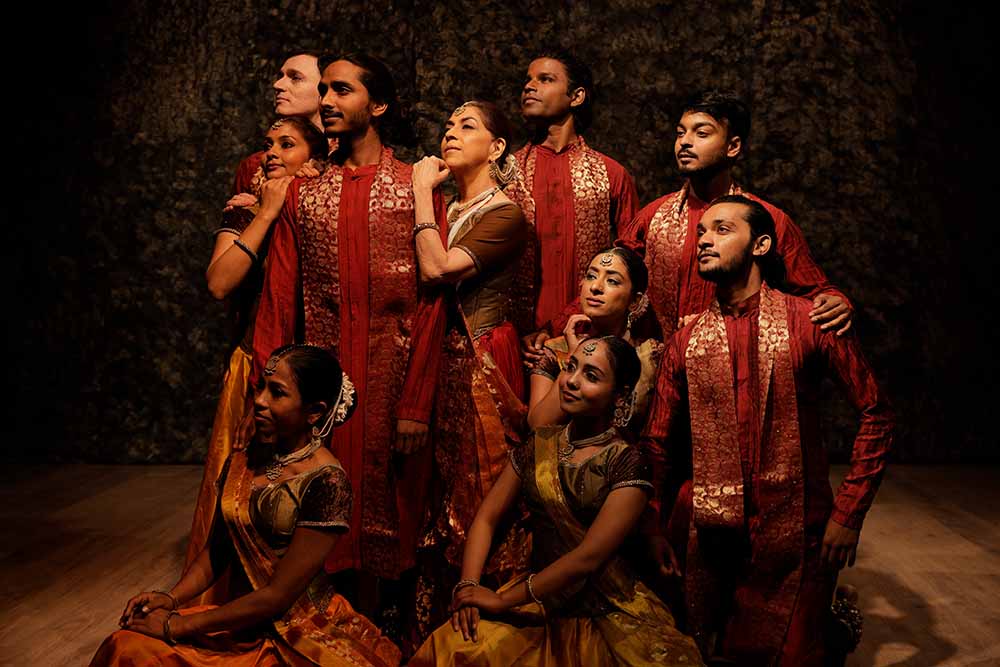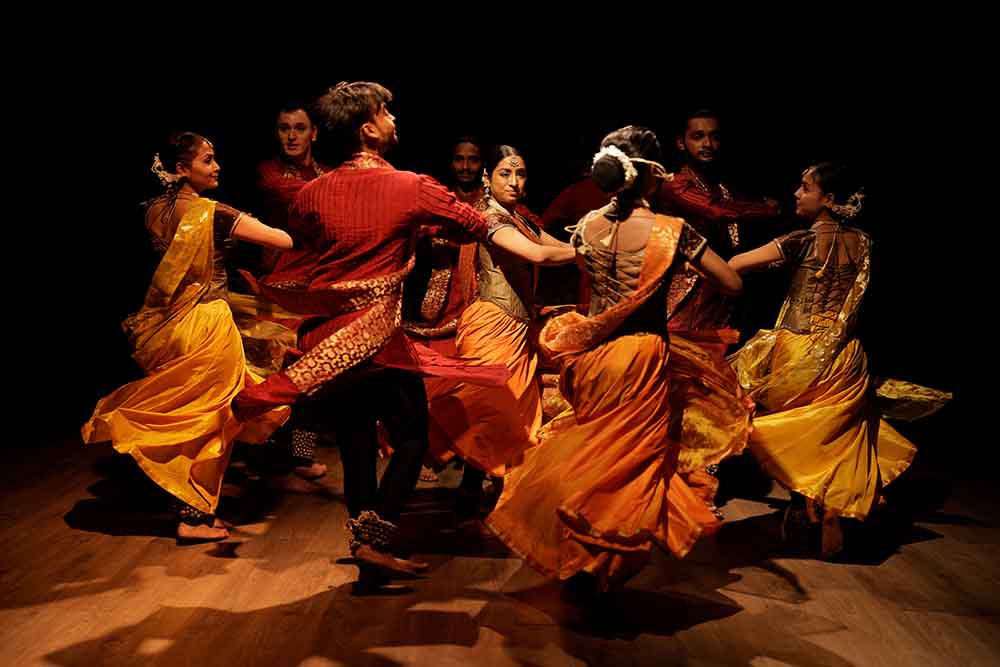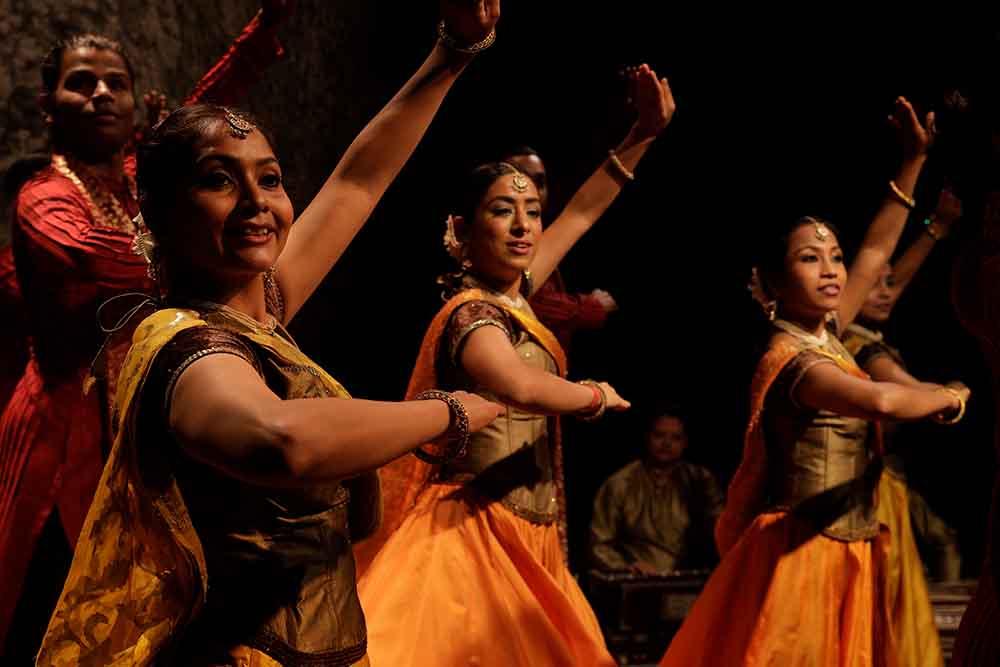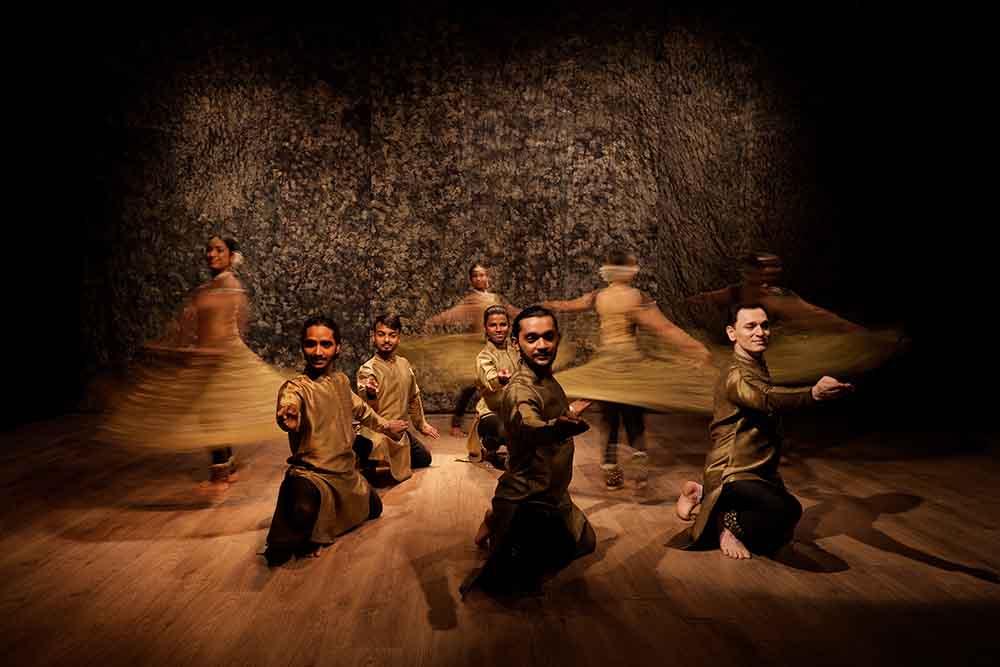Aditi Mangaldas doesn’t just perform Kathak; she expresses it with a depth, clarity, and spirit that continue to redefine the art form in extraordinary ways. Trained under legendary gurus, Shrimati Kumudini Lakhia and Pandit Birju Maharaj, Aditi is a celebrated artist in India and worldwide for the eloquence, energy, and layered complexity she brings to every performance. While deeply rooted in classical traditions, she has also crafted a distinctive contemporary narrative that draws from Kathak’s essence and fearlessly explores new emotional and thematic terrains.
In this conversation with Her Circle, Aditi reflects on honouring her gurus, embracing doubt as a powerful companion, and nurturing Kathak in ways that allow it to breathe in the present. She reveals how tradition and imagination can co-exist, how true empowerment often begins with a single question.
As a Guru Purnima special at the Nita Mukesh Ambani Cultural Centre (NMACC), Aditi, along with her troupe, traces generations of Kathak parampara through a poetic exploration of life’s infinite mysteries.

Image Credit: Innee Singh
‘Uncharted Seas’ promises to be a poetic and immersive experience that transcends the tangible into the realm of the unknown. What first sparked the idea for this exploration?
Standing and gazing at the cosmos, the wide and unfathomable universe, have you not wondered what lies beyond the realms of the known? And at the same time, have you not wondered at what lies hidden in the deep recesses of our heart?
My mother had shared a beautiful quote by the renowned philosopher J Krishnamurti - “You will find freedom, truth, beauty, love, which are one and the same, only when you no longer seek them. Can the mind exist without the movement of search?”
This quote, and a few others that she had sent me, triggered the idea for ‘Uncharted Seas’.
What kind of emotional or intellectual journey do you hope audiences will undertake when they watch this performance at NMACC?
I have always wanted to dance a piece with a comma at the end - and not a full stop. When a sentence is left with a comma, I hope that the viewer will add her or his life journey to that sentence.
This way, the work that I have presented can resonate far beyond space and time - if it does, then it is bound to have some form of emotional or intellectual churning within the viewer.

Image Credit: Innee Singh
NMACC is a landmark space for celebrating Indian arts. What does performing here, especially for a Guru Purnima special, signify for you and your troupe?
The Grand Theatre is a spectacular auditorium at the iconic Nita Mukesh Ambani Cultural Centre. I am most honoured that we have been invited to present our classical work, that too, especially for the occasion of Guru Purnima. I pay obeisance to my Gurus, the two great legendary Smt. Kumudini Lakhia Ji and Pandit Birju Maharaj Ji, both of whom were awarded the Padma Vibhushan. And life has been my greatest Guru - all this comes together in the form of a legacy when this gift of dance goes from the past, through the present, into the future.
Audiences today can be both traditional and highly contemporary. How do you hope ‘Uncharted Seas’ will speak to and connect with such a diverse spectrum of viewers?
Classical or contemporary - it is about the quality of the work - it is about whether it can resonate beyond the walls of the auditorium, beyond space and time. It is this resonance that will eventually touch the viewer, regardless, where geographically or in which era the viewer is.
With vocal compositions by Shubha Mudgal and Aneesh Pradhan woven into your choreography, what was the most rewarding part of this collaboration?
The most rewarding part about working with brilliant collaborators, such as Shubha Mudgal and Aneesh Pradhan, is that one doesn’t interpret each other. Rather, the exploration of the concept is simultaneous. The fruitful collaboration is a result of many conversations and the exchange of ideas. This kind of simultaneous approach lends any work multiple layers of entry points for the viewer. To me, this makes the work rich, multifaceted and complex in its structure.
You’ve often spoken about blending the classical forms with the contemporary style. How do you find that delicate balance while retaining the essence of Kathak?
I wouldn’t call my work blending. It is more like absorbing. If you plant a seed of Kathak (and I have only learnt, taught and explored Kathak) and to this seed, you water it with the wider Kathak sensibility - a Kathak tree will emerge.
But if you water the same seed with contemporary sensibilities, contemporary text, poetry and soundscapes, a very different tree emerges that reaches another part of the sky. So even though both these seeds are Kathak seeds - two very different streams emerge, one classical, and one that I term as my “Contemporary dance based on Kathak”.

Image Credit: Innee Singh
Having learned under legends like Padma Vibhushan Kumudini Lakhia ji and Pt. Birju Maharaj ji, how have these gurus shaped not just your art but also your philosophy and approach to life?
Art cannot exist in a vacuum. It breathes “The now” and from the current environment. Therefore, learning with my gurus, Smt. Kumudini Lakhia Ji and Pandit Birju Maharaj Ji, who are both great legends, my dance as well as my life is bound to be inspired by their philosophy.
However, I do feel that one must have the courage to dance one’s own dance. One must not be bogged down by the great history and geography of our dance, or the great legacy of one’s Gurus.
Having said that, one has to treat this great inheritance as one would treat something that is extremely precious, and from that legacy, explore your own path. I do feel that one must have the courage to get lost in the forest of Dance. And when you are lost, you will be bound to take unknown paths and discover fascinating truths.
You’ve shattered many classical confines, taken several creative leaps. You inspire women around the world today to shatter conventions. What advice would you give women artists who wish to push the boundaries of their own traditions?
I was extremely lucky to have a family that encouraged debate, and that made me understand the fact that nothing is carved in stone. Everything is flowing. This has given me the courage to explore my own dance - to fail, to succeed, but to have the courage to get up and walk again. Courage to make one’s own mythology, one’s own narrative - to have the courage to listen to criticism but not get bogged down by it.
But there are no shortcuts - dance with passion and with immersion. Let doubt guide you rather than certainty. Because with doubt, you will be constantly exploring. And that exploration will give you the courage to be the woman you want to be.

Image Credit: Innee Singh
Classical dance is a powerful language of expression. How do you view dance as a medium for empowerment, especially for women, both on stage and off the stage?
What would our lives be if there were no art? Did Picasso not say that art washes away the dirt of everyday life? Does art not bring us closest to our humanity and being human? Art can only really exist in an atmosphere of freedom – this truth empowers women. And though we cannot bring about drastic change in society, what we as artists can do is plant a seed of enquiry and of doubt. Through our creative efforts, we can plant a seed to question where injustice is happening. That is enough for transformation to happen.
As a woman leading a globally acclaimed troupe, what shifts have you observed in the representation of women in classical dance spaces today?
Firstly, as I mentioned above, art cannot exist in a vacuum, and therefore it has to resonate and have an ear open to “The NOW”. Societal changes will impact dance as well. However, unlike other fields, it is quite the contrary in classical dance. Representation of women in classical dance spaces has been that of strength and resilience. Look at the Indian classical dance scene over the past century. The presence of women has grown from strength to strength.
In India, since Independence, there have been many women pioneers of Dance - many who broke boundaries, family and societal restrictions to follow their passion. Today, many women dancers and choreographers are hailed as the greatest in the world. Dance, whether Classical or Contemporary, is a powerful language of expression. Dance empowers women by providing a platform for self-expression and enabling each one to find their own identity, without any dependence. This very act of owning one’s own passion helps empower us.
With younger generations being drawn to instant, digital content, how can classical dance stay relevant and captivating? What excites you most about taking Kathak to new, perhaps non-traditional audiences?
For younger generations, to be captivated and interested in classical dance, in this very digitalised and ‘instant content availability’ world, the onus lies on us, the artists. Can we challenge their understanding of art? Can we put something forward that they cannot get on the internet? Can the experience of dance be such that for that one hour it is a transformative process for them… that puts forth extremely interesting challenges, both visually and intellectually…and also churns an emotional response. A response that is immediate and tangible and that ignites their passion and their curiosity.
On the occasion of Guru Purnima, if you could give one message to young girls and women watching you perform, who want to build their own unconventional path, what would it be?
Get lost in the forest of Dance, if not sight, fragrance will surely guide you.
For more details about her performance at the NMACC, visit - Uncharted Seas By Aditi Mangaldas